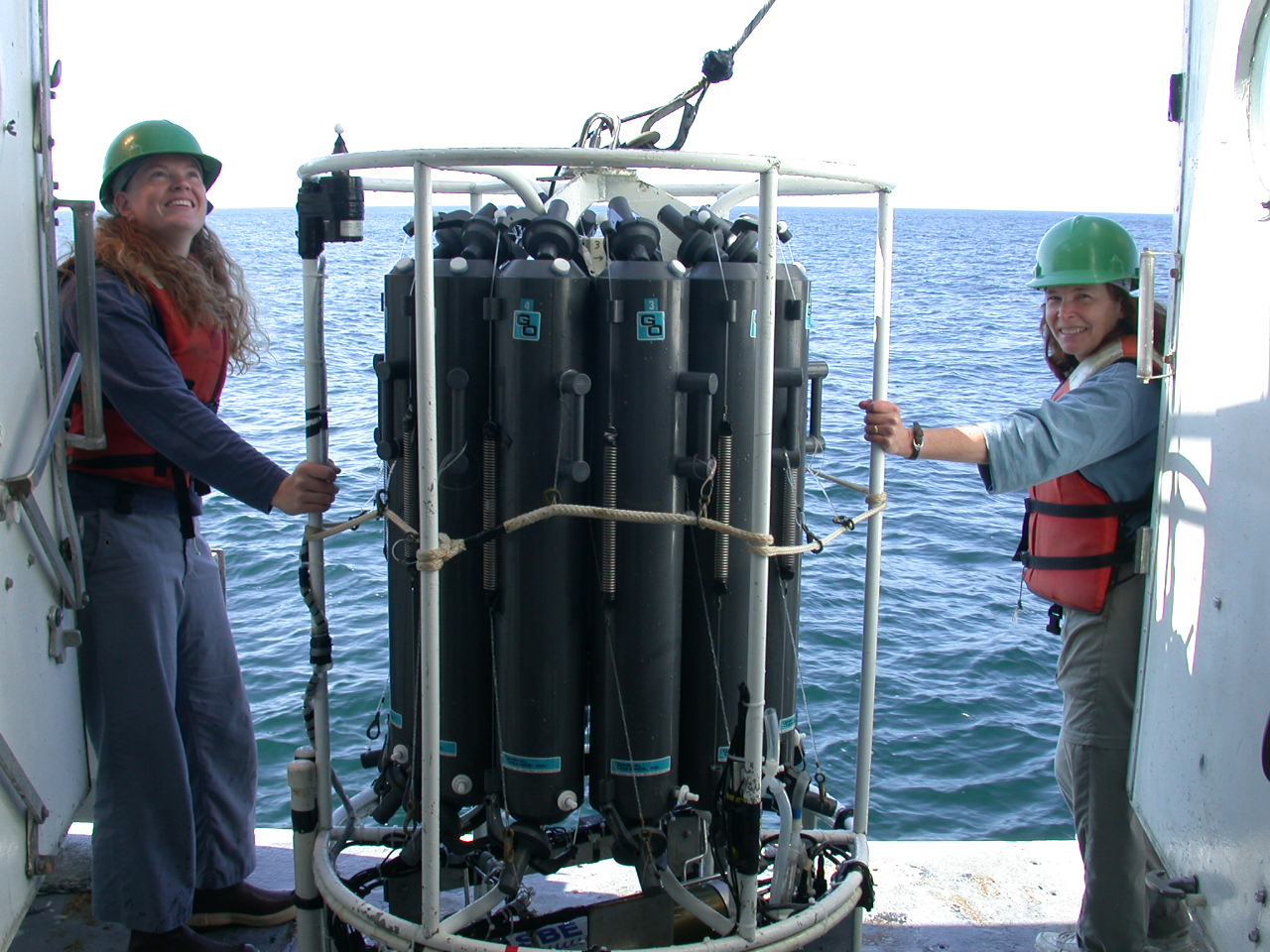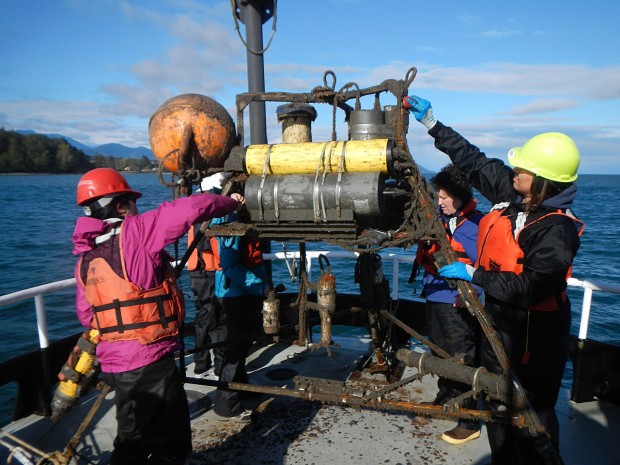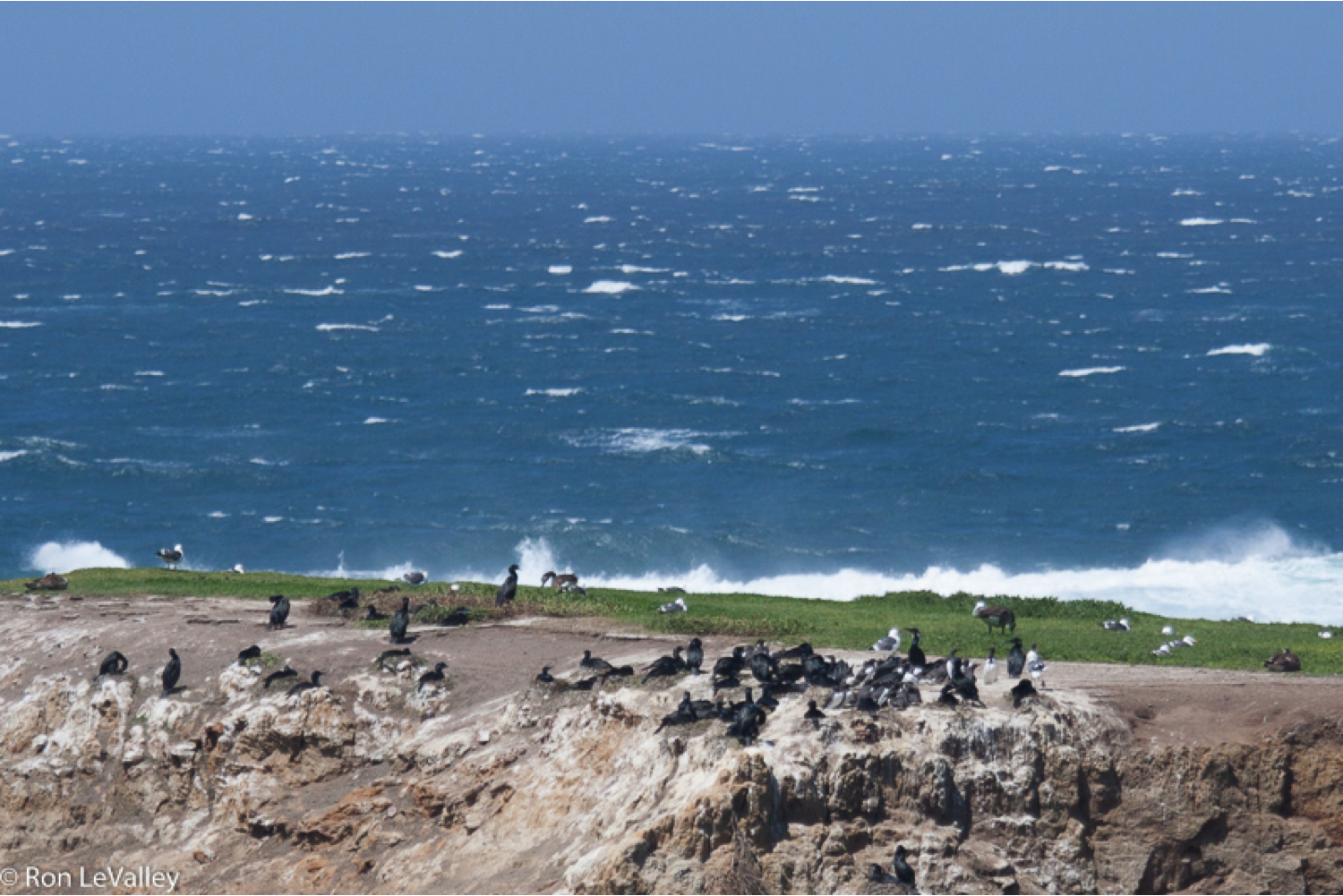Late summer is the peak time for harmful algae that can turn lakes into toxic scum, cancelling fishing trips and fouling water supplies. While the Pacific Northwest doesn’t get anything near the activity that turned parts of Lake Erie into bright green slime, our coasts are vulnerable in late summer to this largely unpredictable – and in our case unseen – menace.
Read more at UW Today »Ocean’s most oxygen-deprived zones to shrink under climate change
Climate change is complex, no doubt about it. Much of that complexity lies in the interconnectedness of our world, where scientists are continually striving to increase our understanding of how natural systems function and may be affected with the ripple effects associated with a changing climate. Sharpening our understanding helps us better predict what the future holds. In a recent paper published in Science, College of the Environment’s Oceanography associate professor Curtis Deutsch talks about a new link in the climate change story, and how it may play out in terms of the oxygen depleted zones of our oceans.
Read more at UW Today »A unique lab class: UW students explore nation’s largest dam removal
The Friday Harbor Laboratories, located on the remote shores of the San Juan Islands, provide a unique setting for students to live and breathe marine research. This spring, a group of students from several different colleges and universities participated in one of the labs’ apprenticeships looking at the effects of the Elwha Dam removal on the Strait of Juan de Fuca’s marine environment.
Read more at UW Today »Ocean upwelling becoming more intense with a changing climate
Our Washington coastline is one of the most prolific and productive in the world, teeming with abundant plant and animal life. In fact, much of entire U.S. west coast is the same, and we can largely thank a strong upwelling system for driving this bounty. New research published in Science has shown that upwelling in the eastern boundary current systems – meaning, the eastern edges of ocean basins across the globe where winds, currents, and geological formations create a prime environment for upwelling – has increased globally over the past 60 years.
Read more on the Los Angeles Times »Using eDNA to help scientists monitor marine ecosystems
Marine plants and animals leave behind tiny markers of their presence, often in the form of skin cells that have been shed, damaged tissues, or waste products – and within that lies their signature DNA. From a sample of seawater, scientists can read that eDNA — that is, environmental DNA — and paint a picture of species diversity in specific ocean ecosystems, determine whether or not invasive species have landed in local waters, and even sharpen their ability to monitor ecosystem changes as is often required by law.
Read more at the Stanford Woods Institute »





